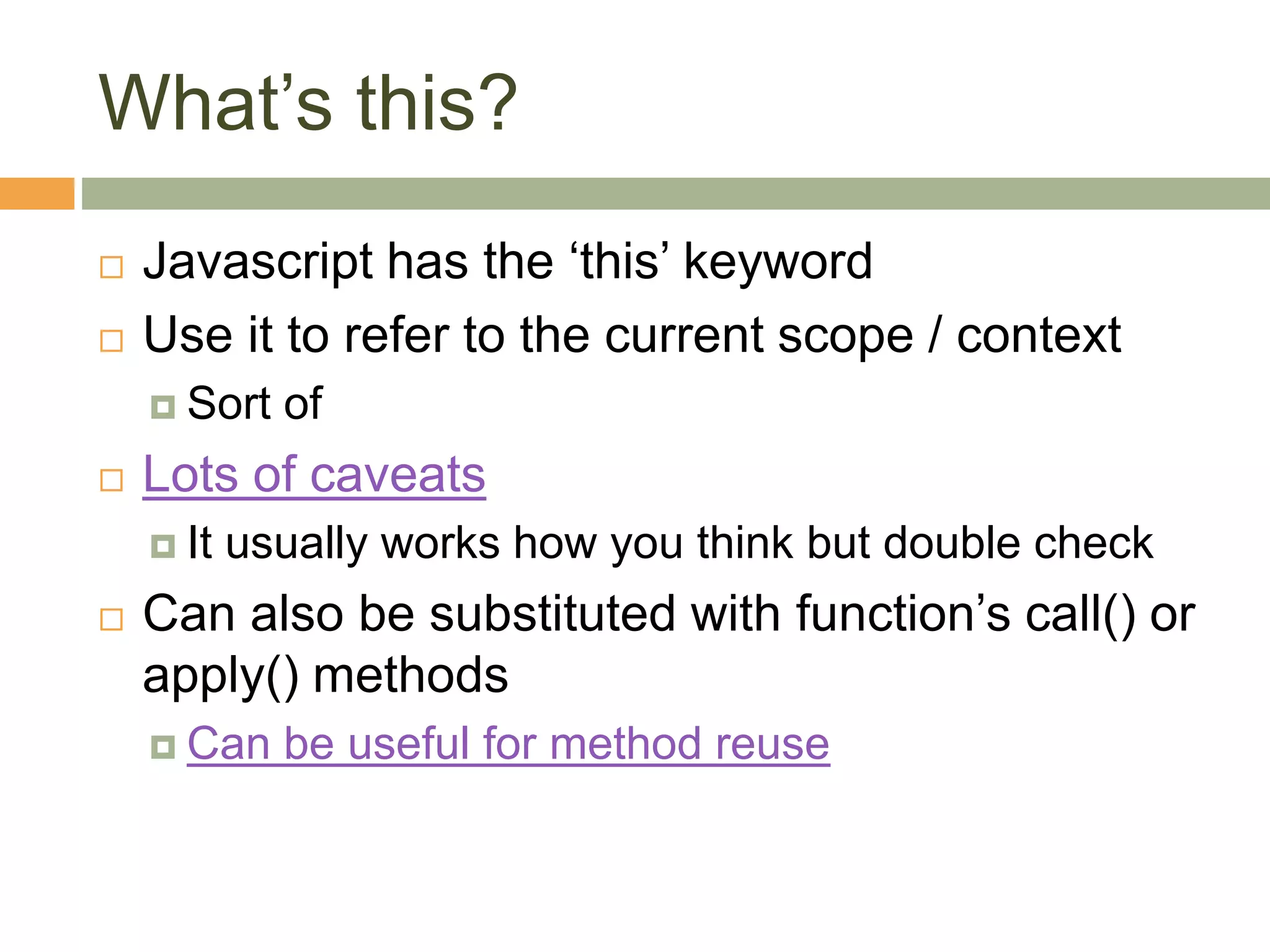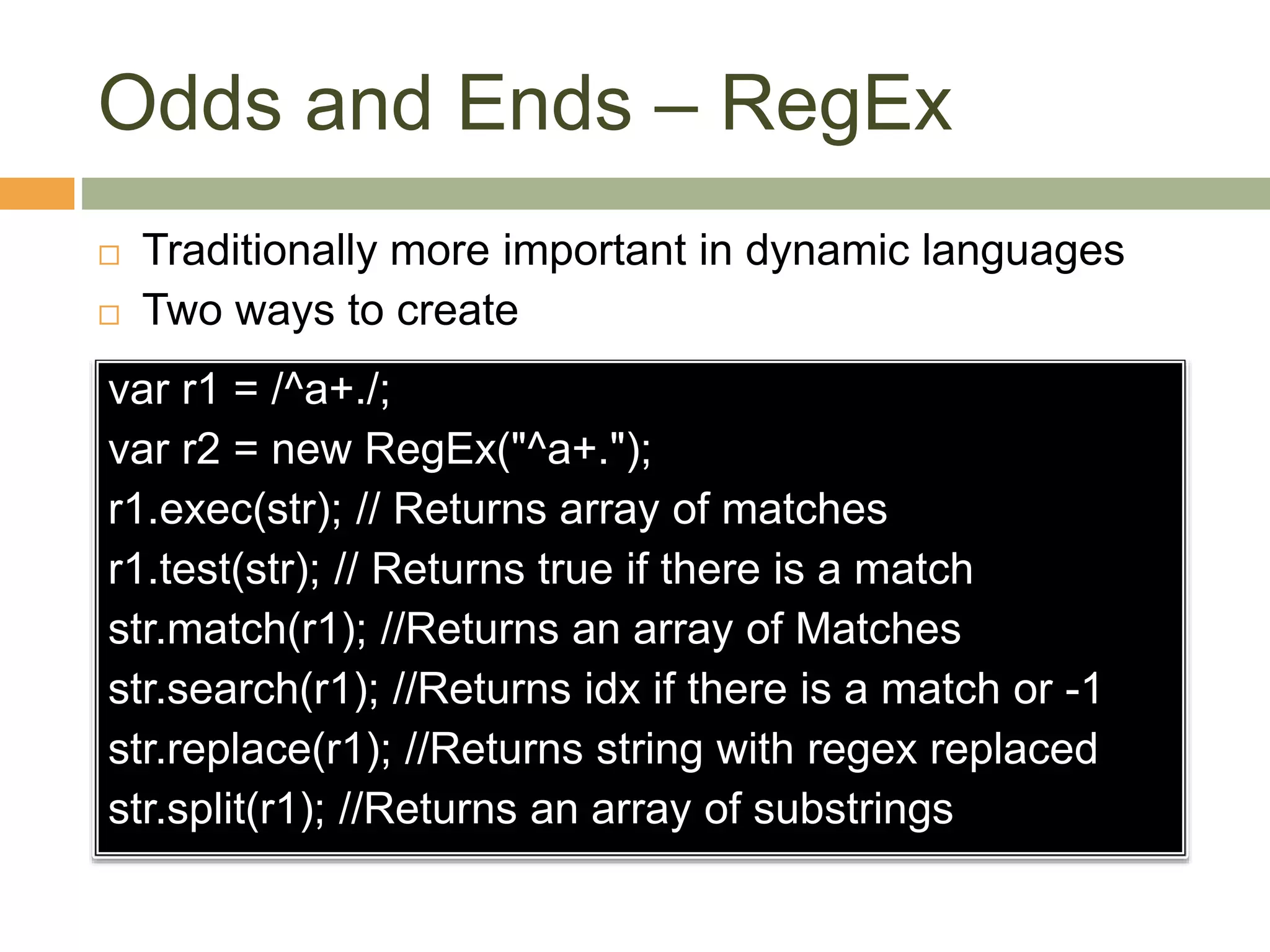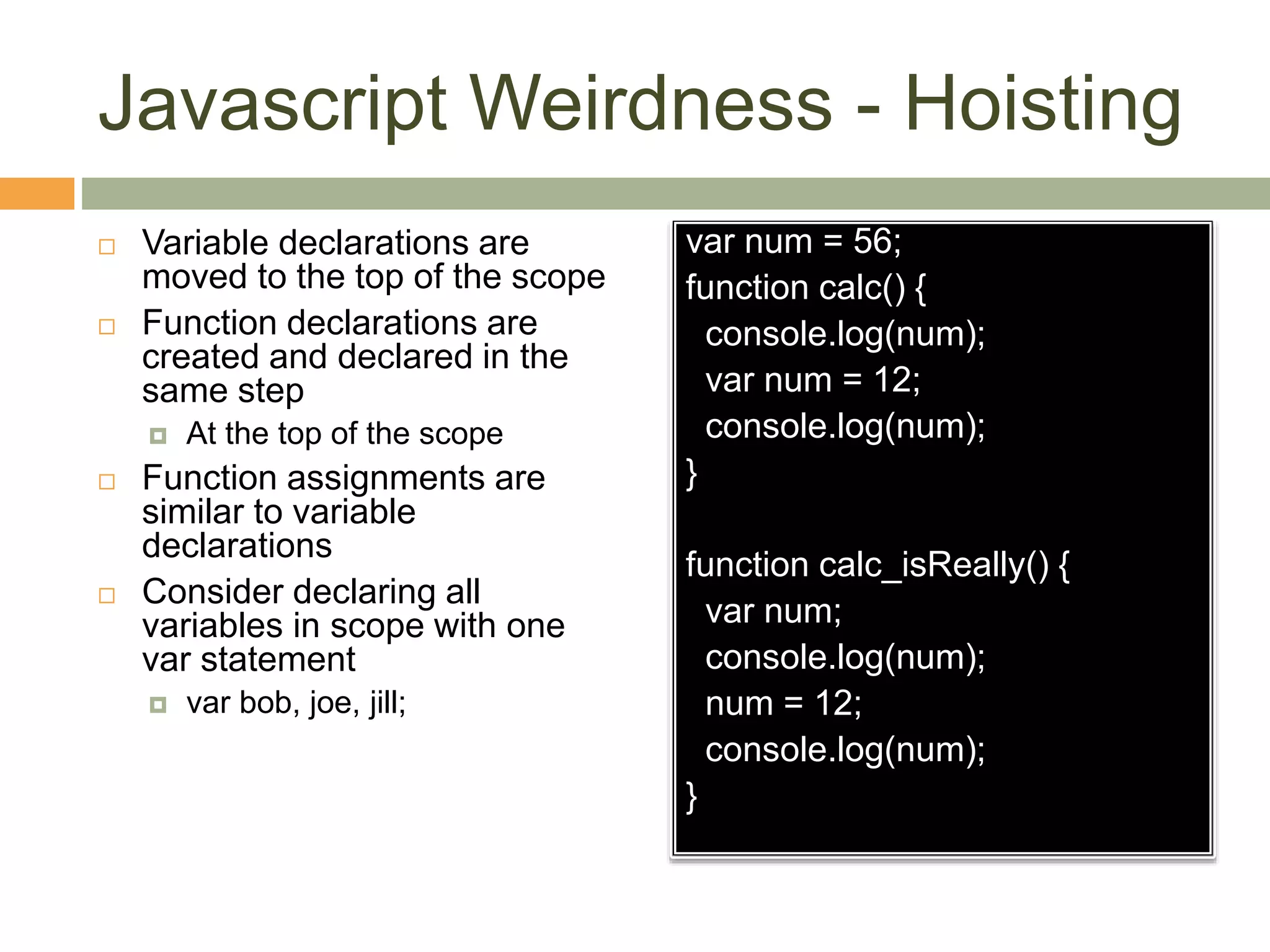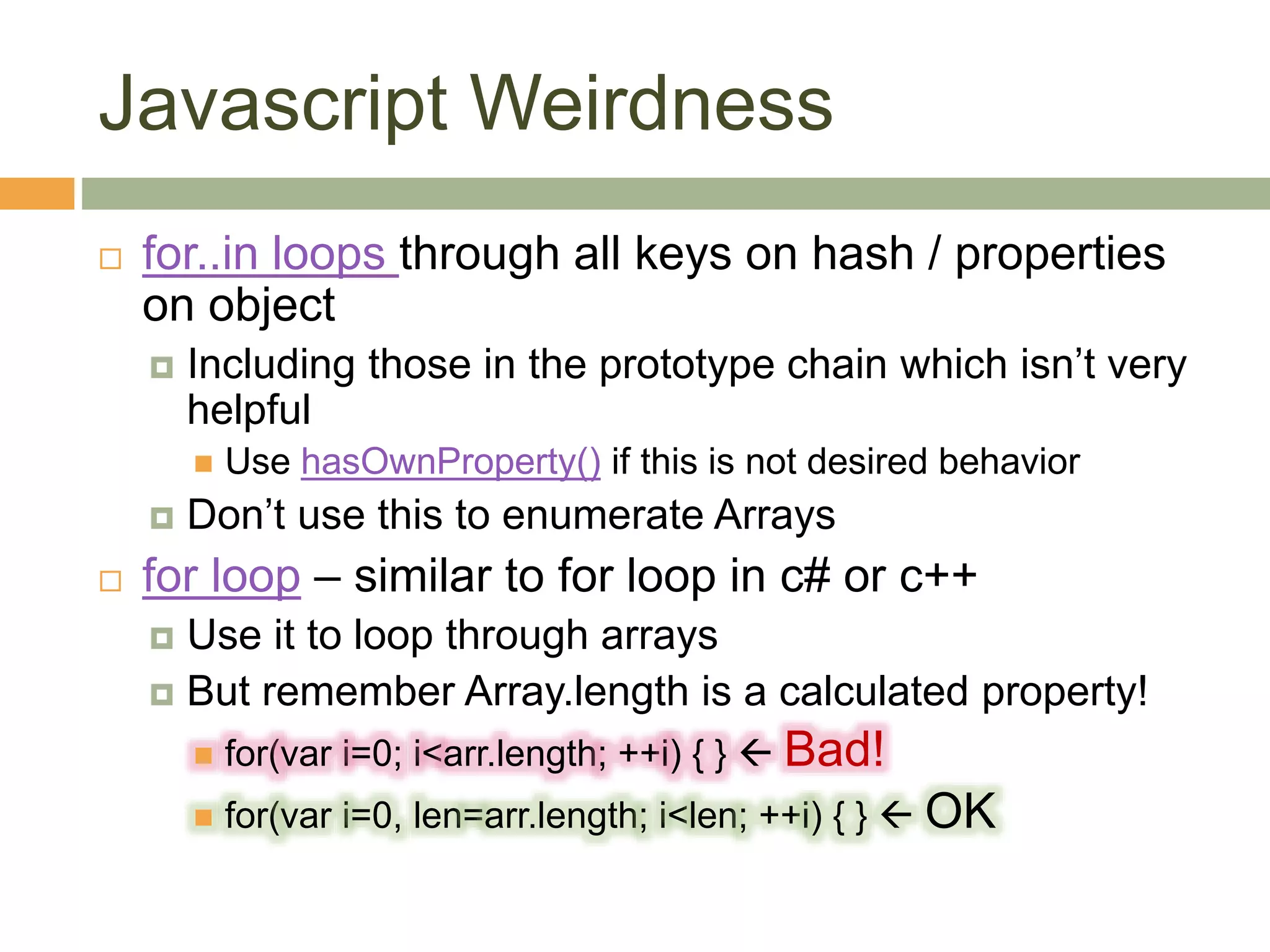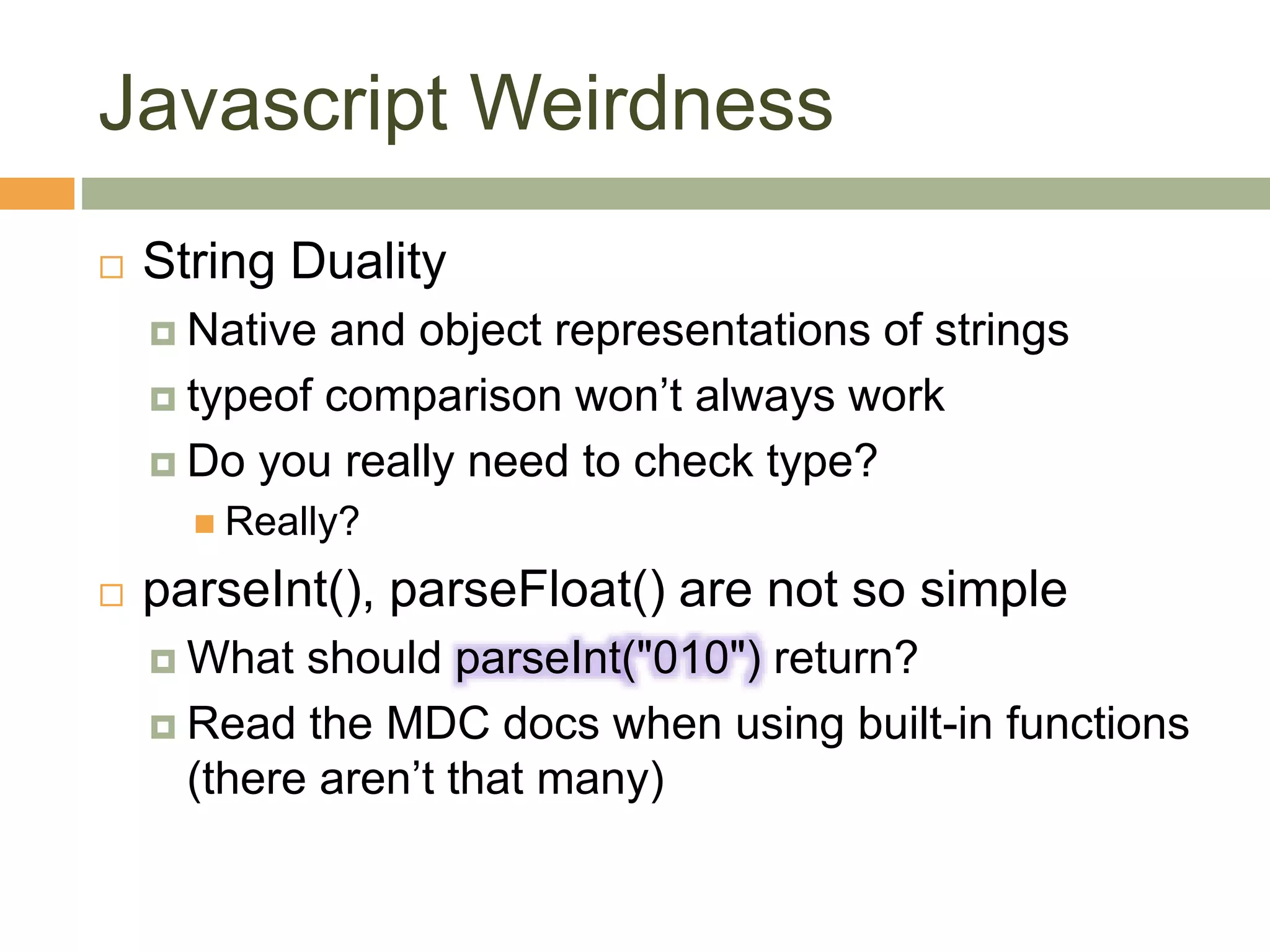Javascript is actually called ECMAScript. The document provides an overview of JavaScript including how it interacts with the DOM in the browser, using JavaScript in web pages, syntax, control structures like loops and conditionals, objects as hashes, functions as first-class objects, loose typing, closures, prototypes, JSON, cross-domain AJAX, libraries like jQuery, and resources for learning more. The global scope in JavaScript is discussed and the importance of using var is emphasized to avoid polluting the global namespace.
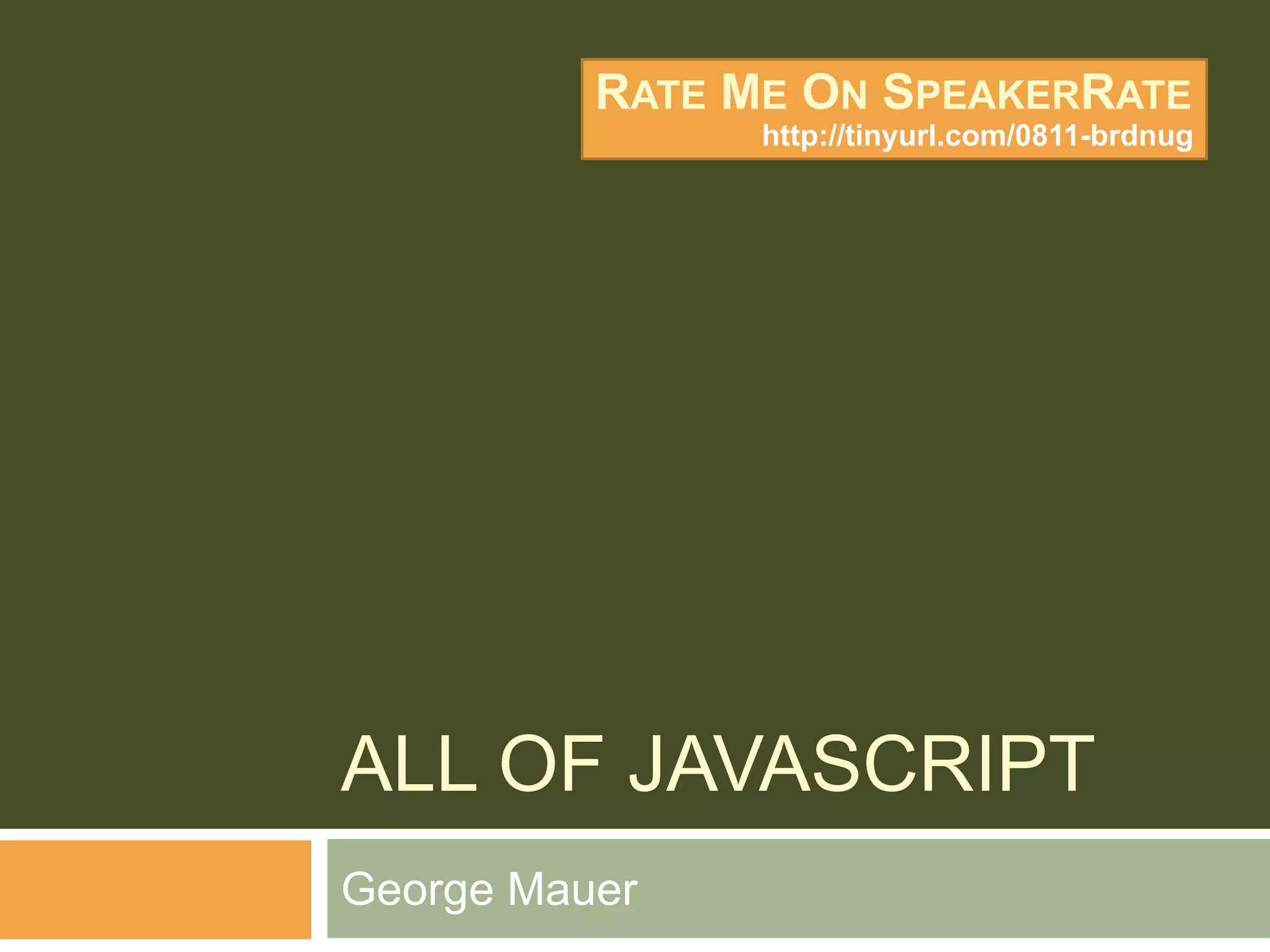


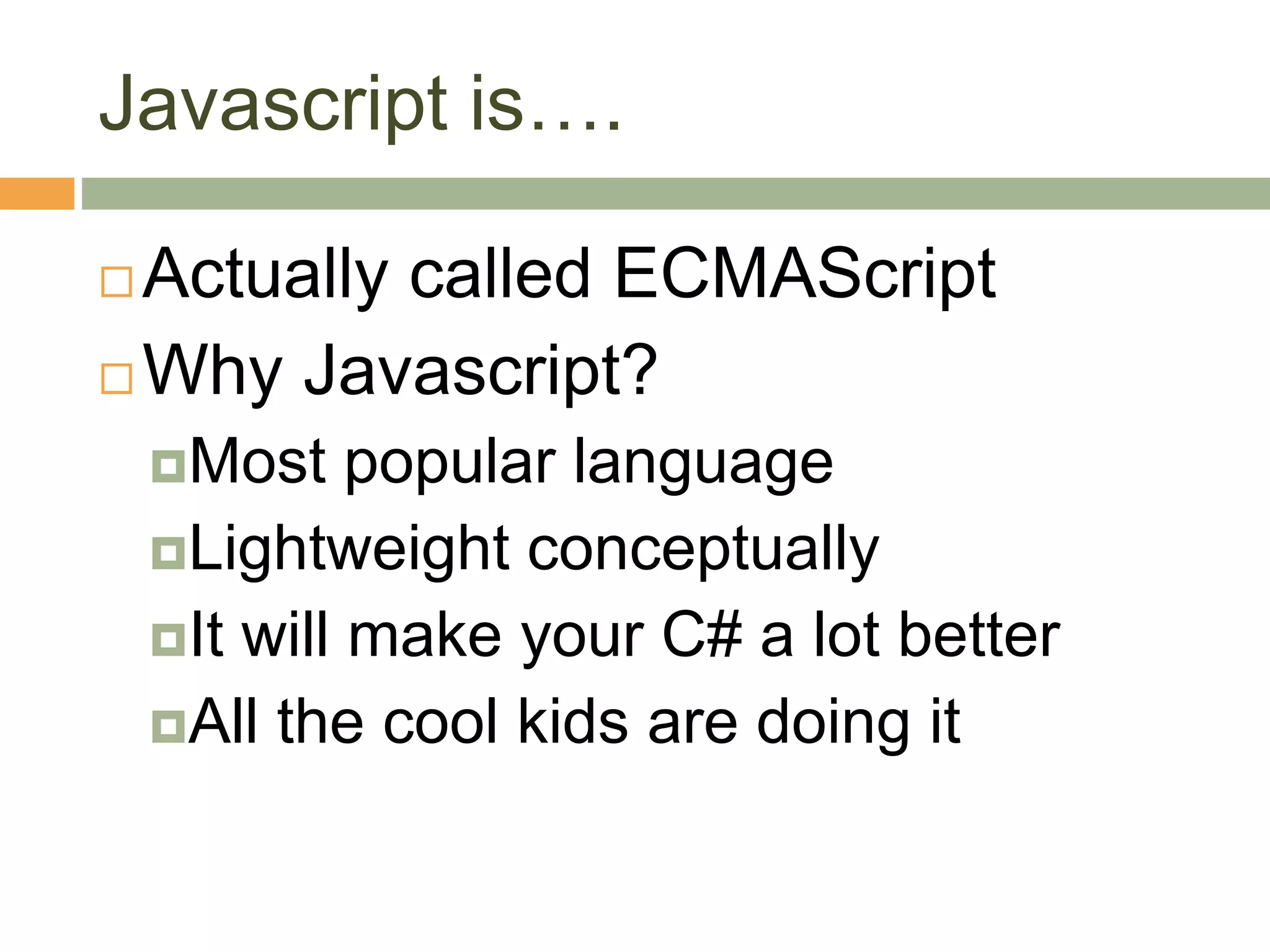
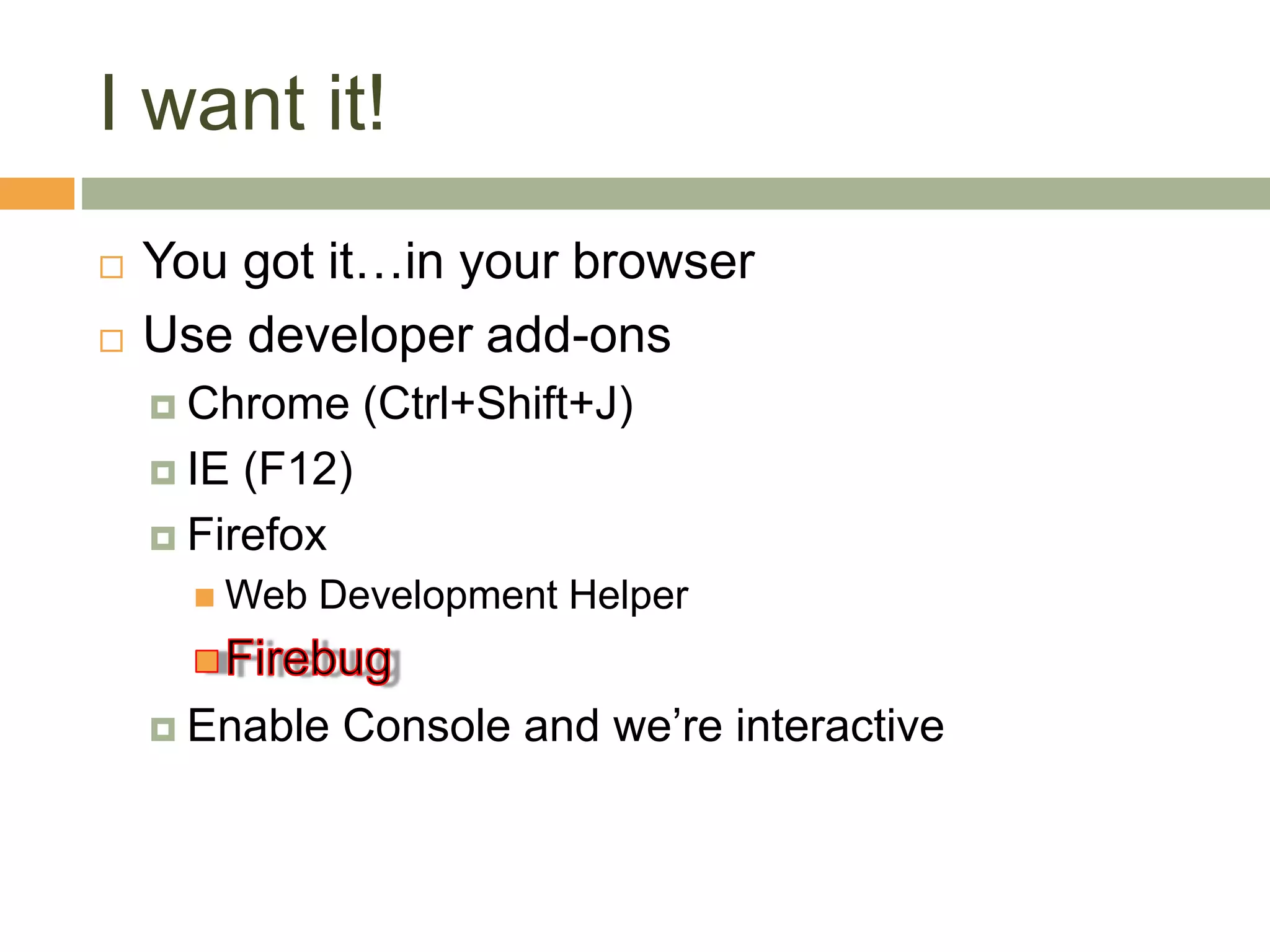
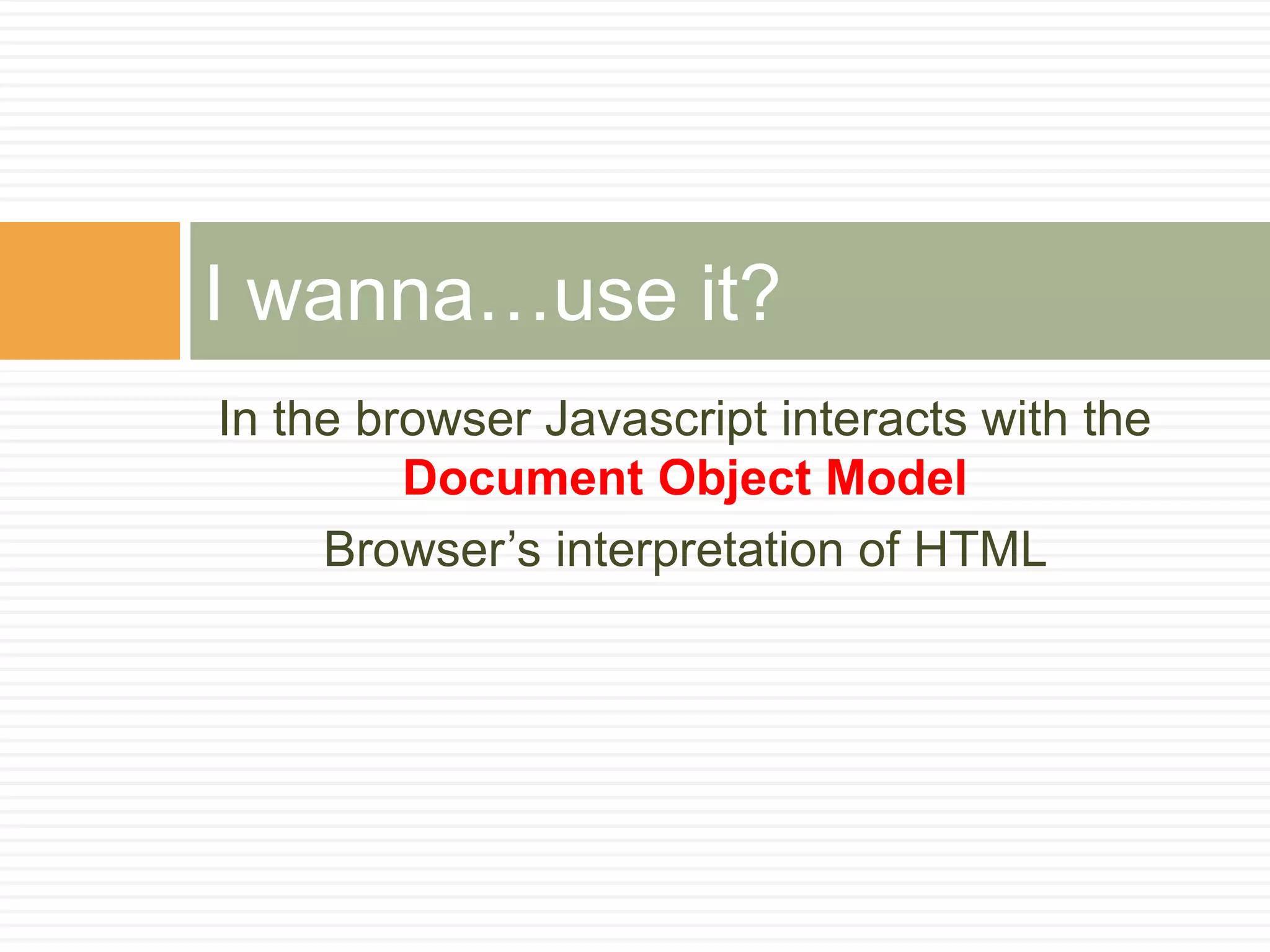
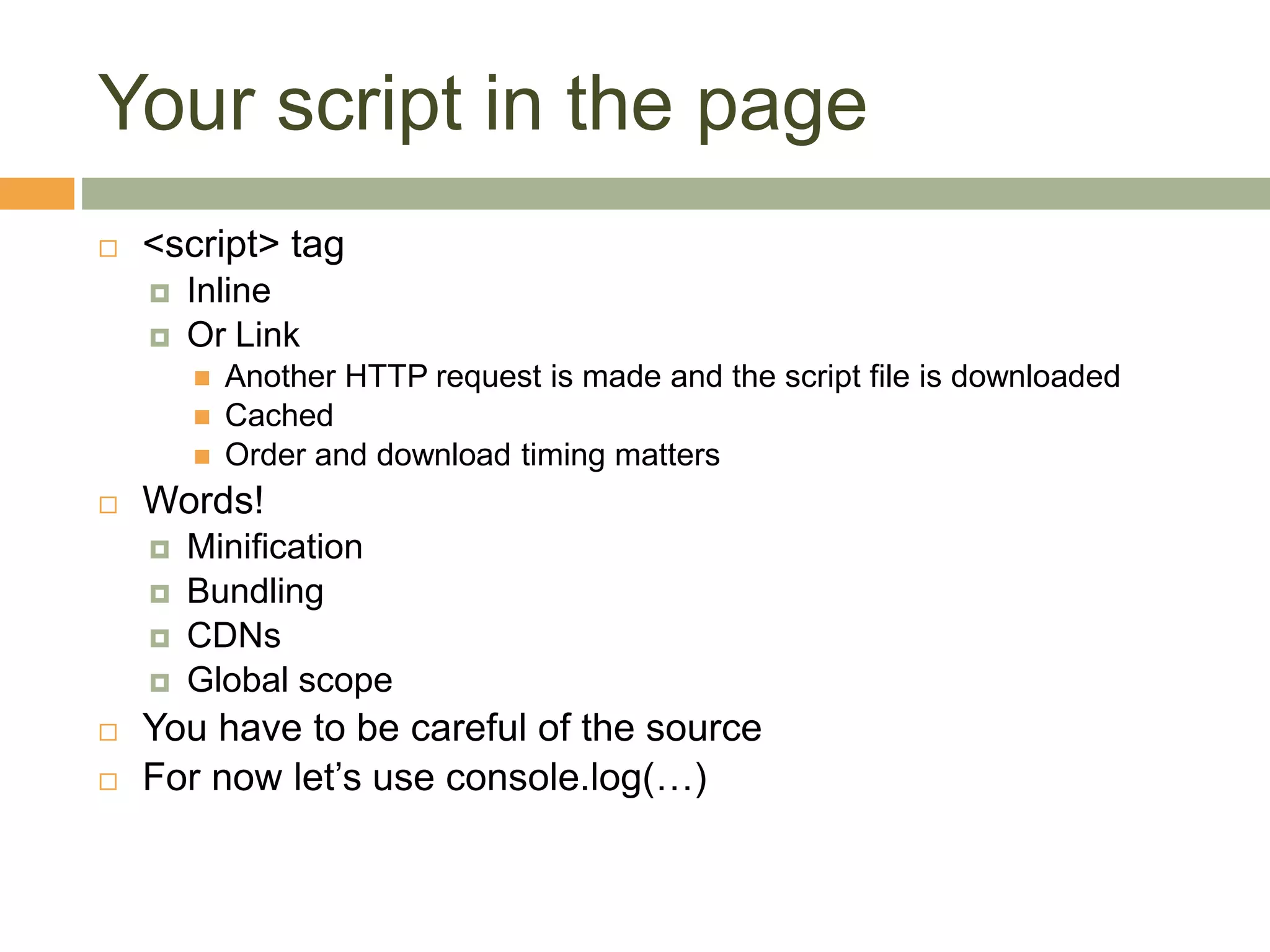

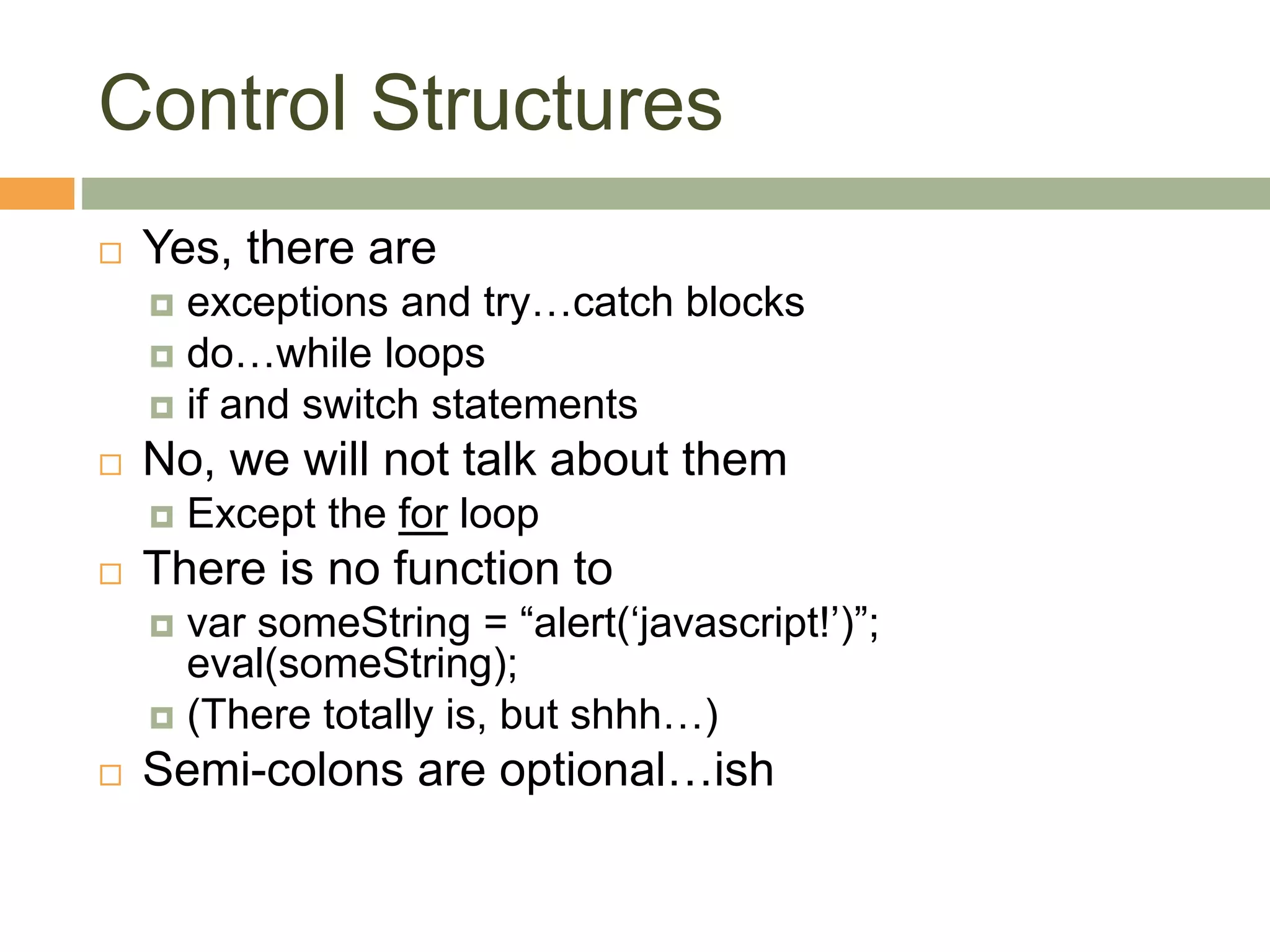
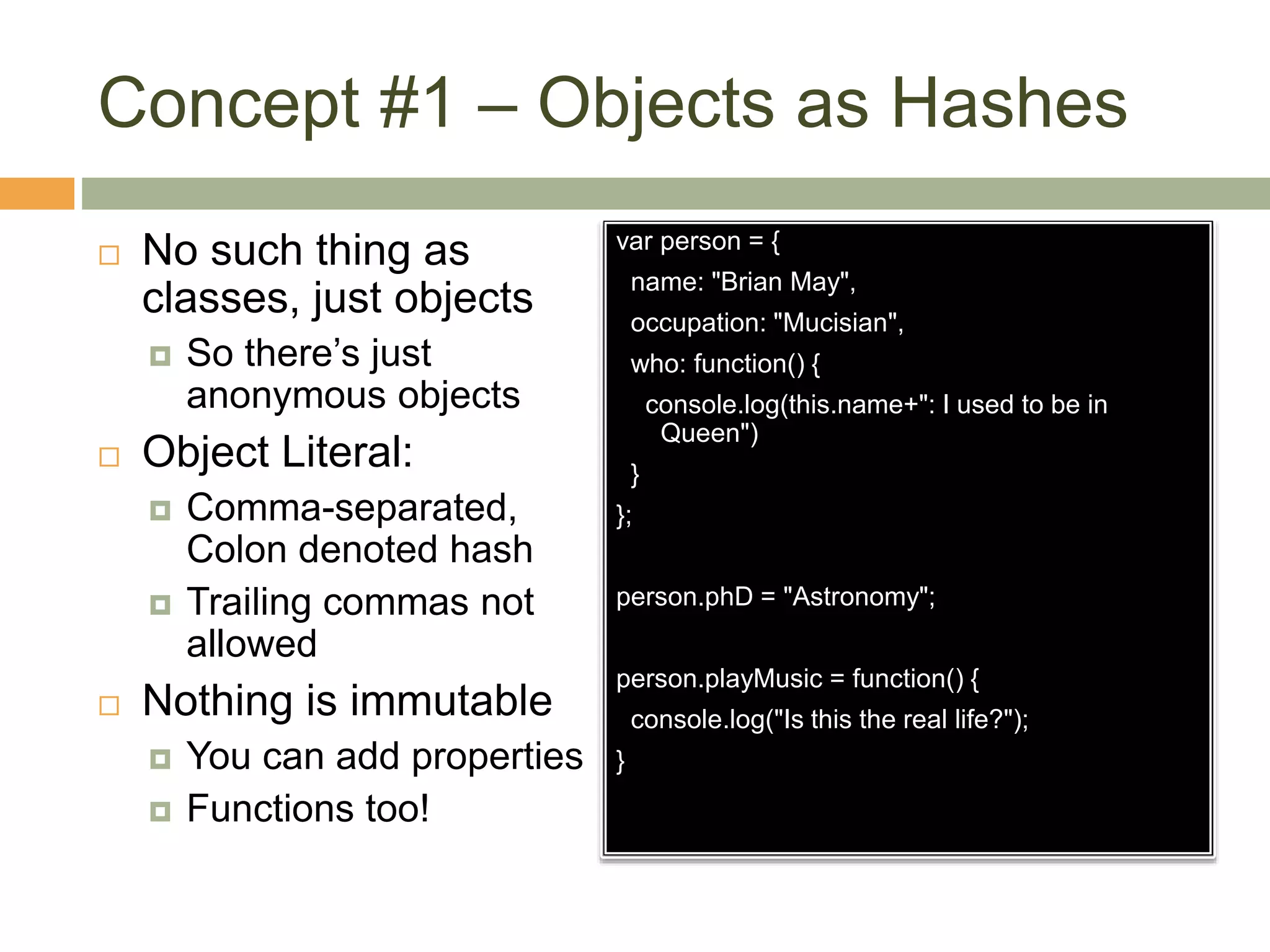
![Concept #1 – Objects as Hashes
Objects ARE Hashes/Dictionaries
myObject.propertyName == myObject[“propertyName”]
Use console.dir() to explore objects
Arrays
Comma separated, Square brackets
Elements in array can be of any type
Arrays are objects](https://image.slidesharecdn.com/allofjavascriptdep-110613233829-phpapp02/75/All-of-Javascript-11-2048.jpg)
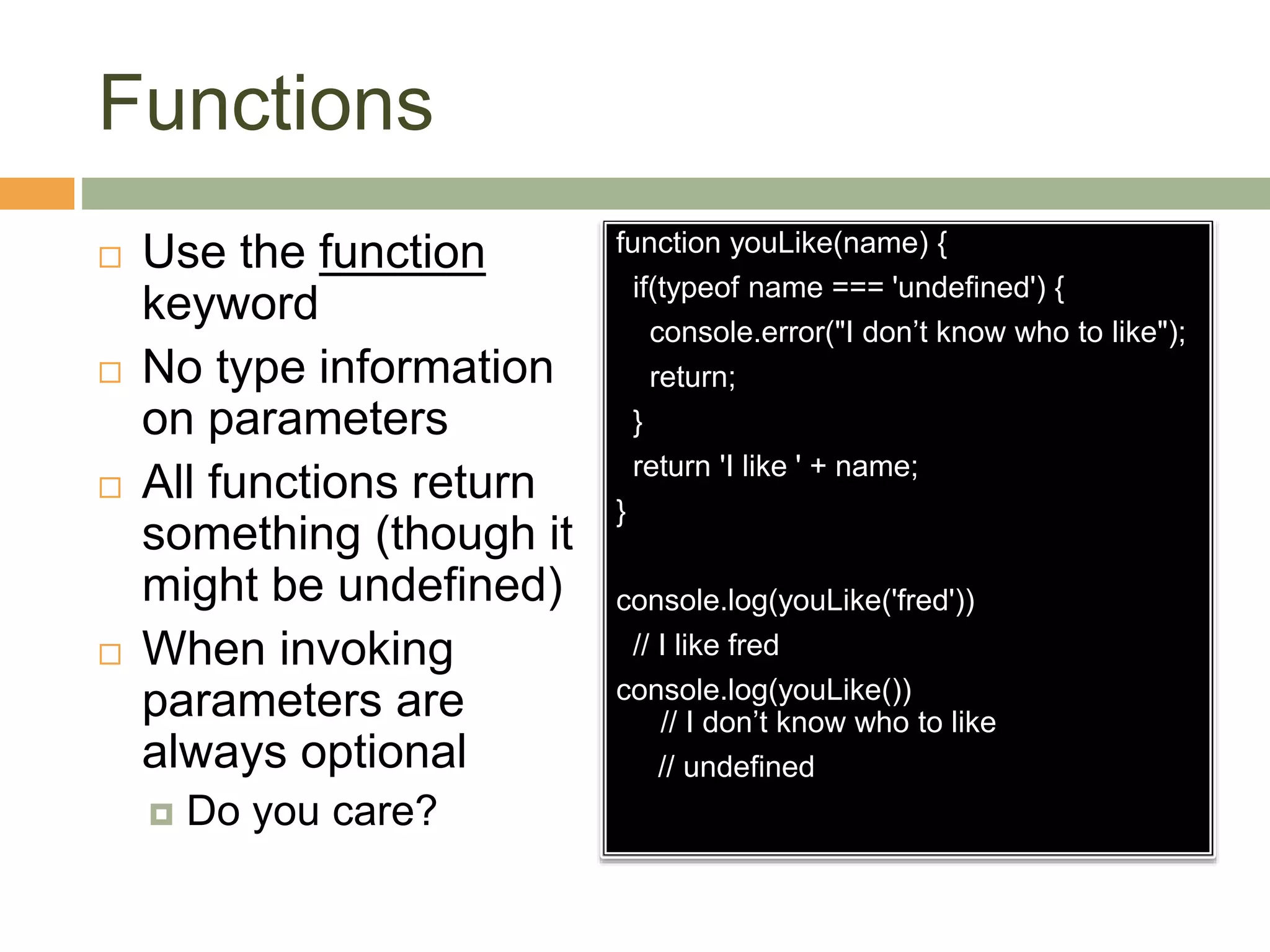

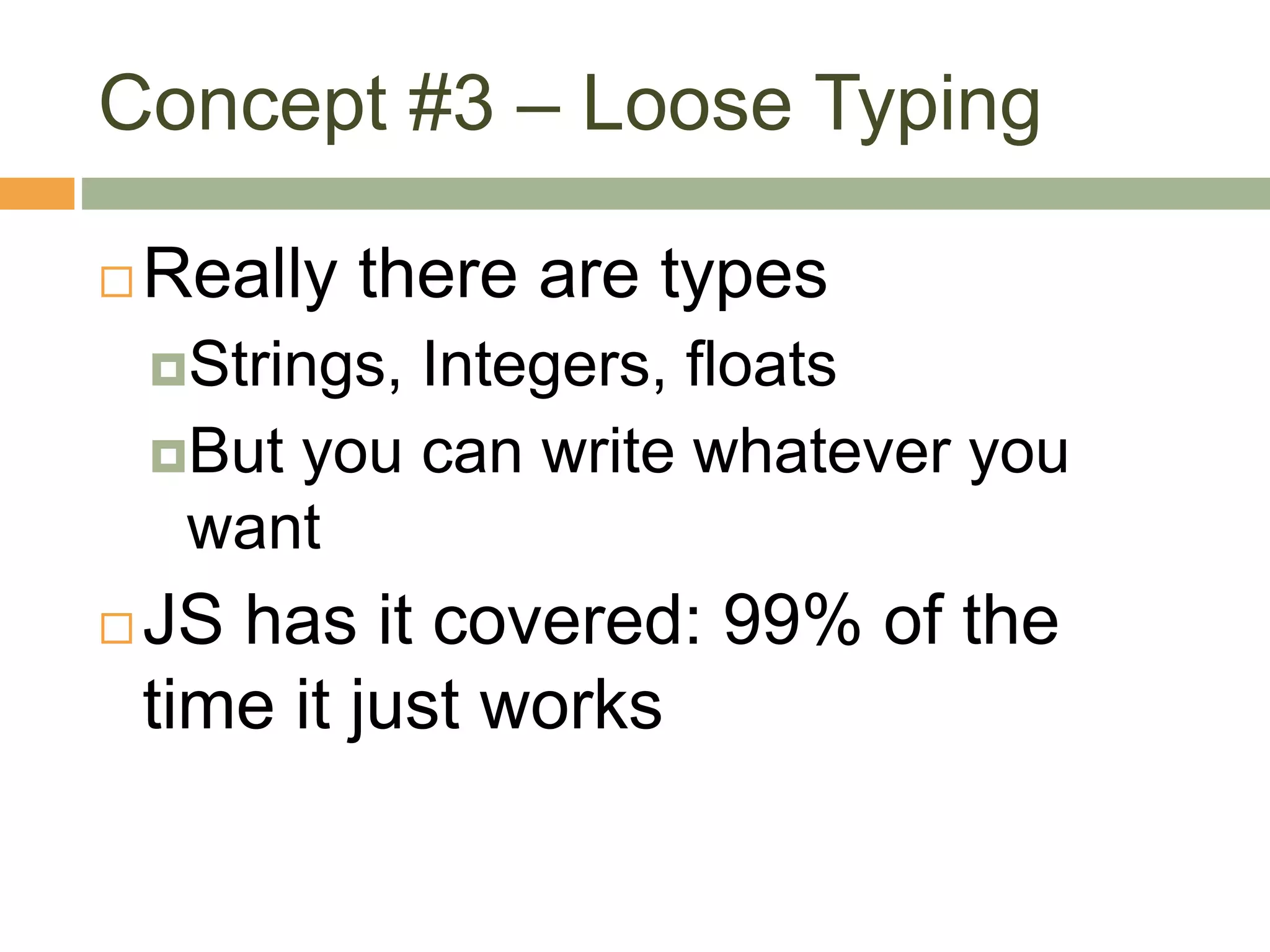
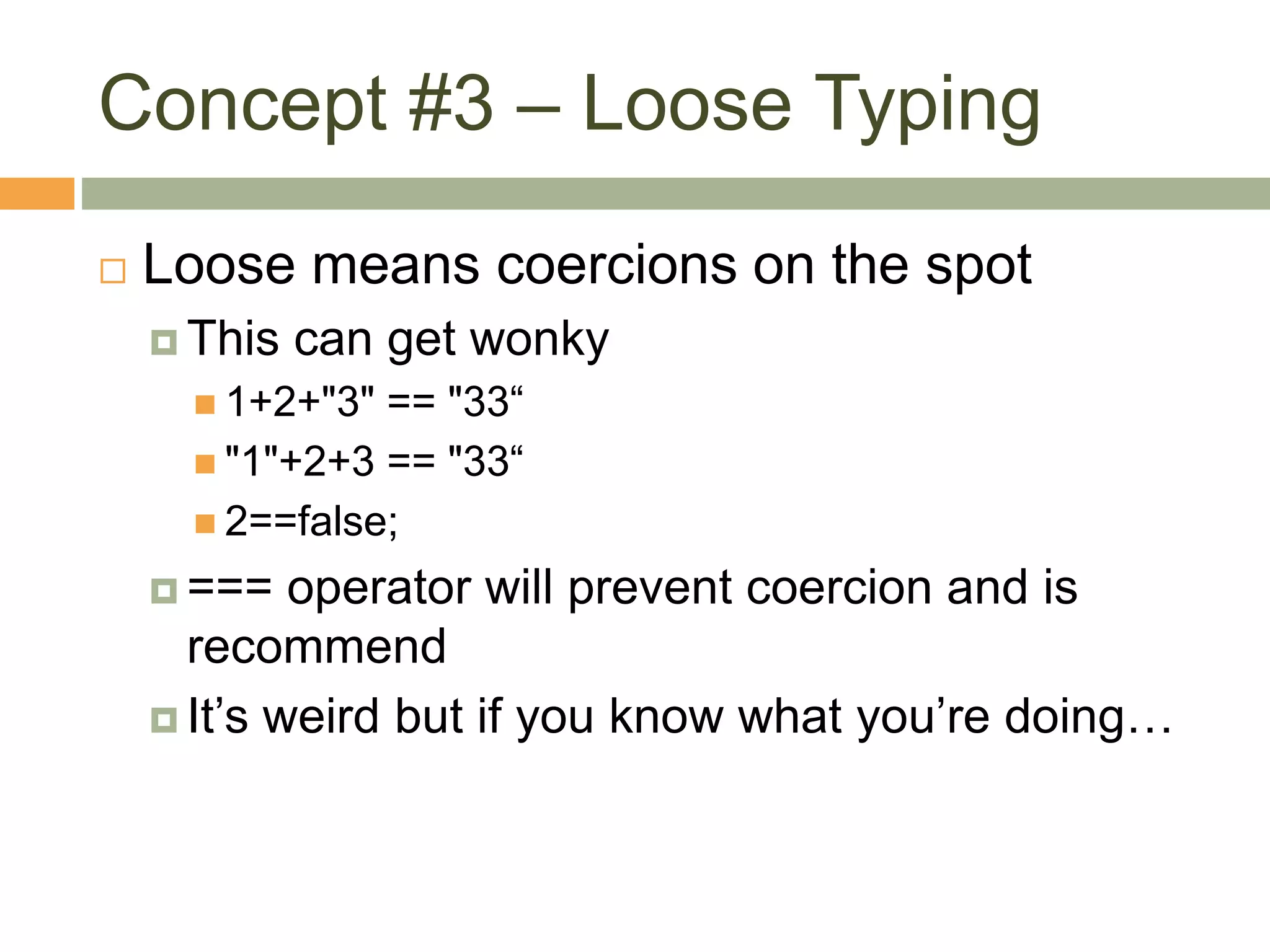
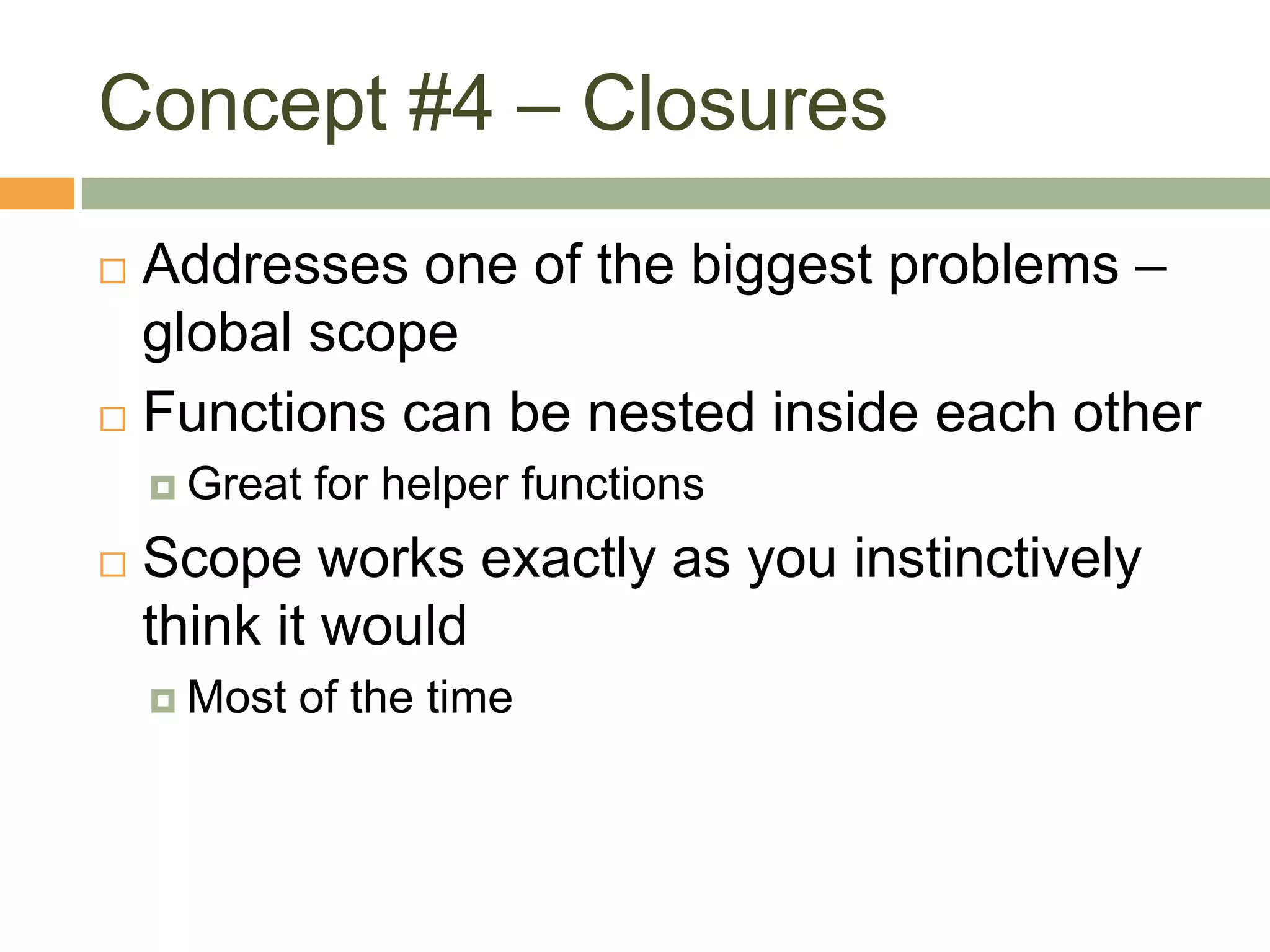
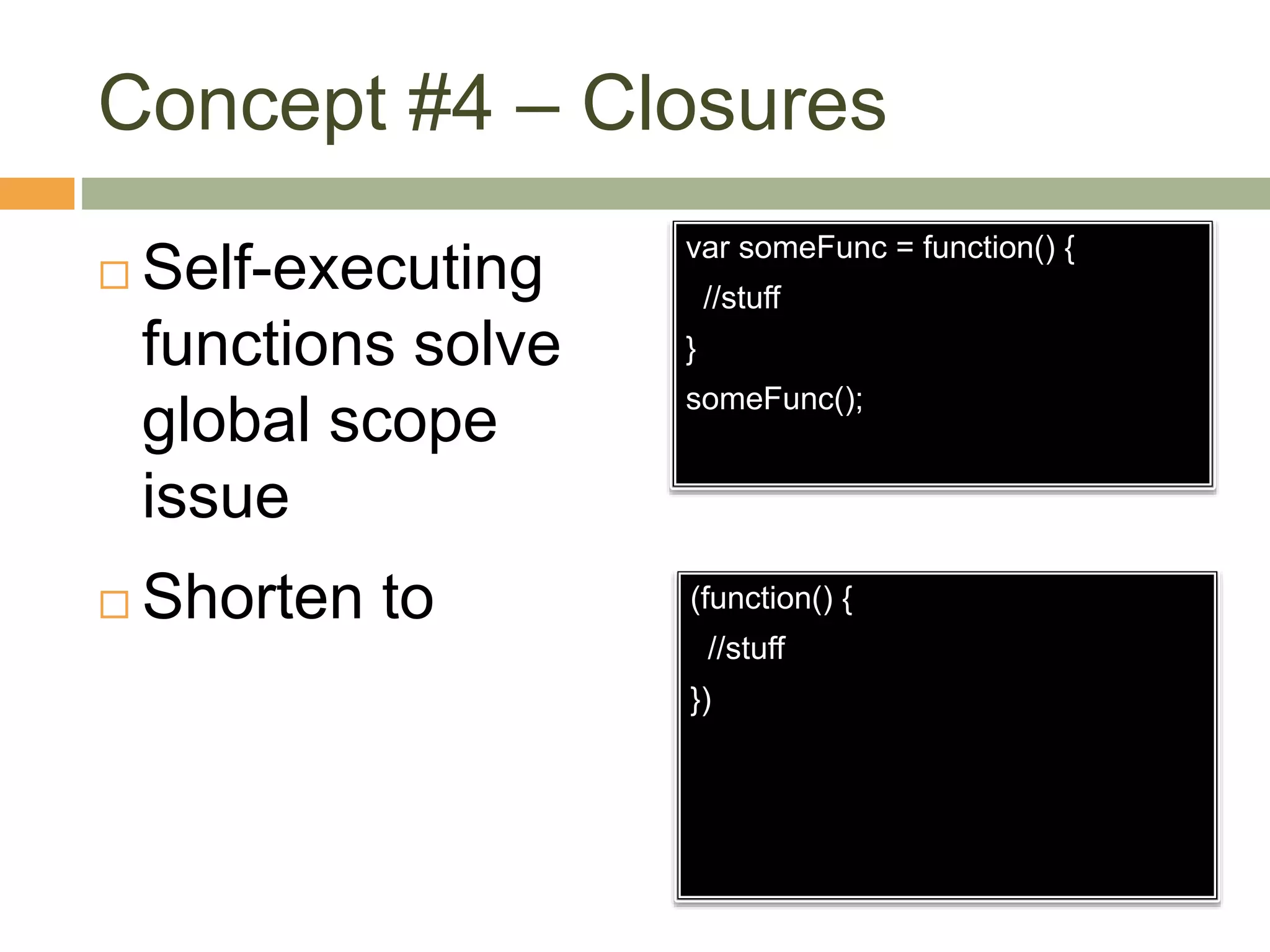

![Concept #5 – Prototypes
Javascript is object-oriented and has no classes!
Prototype inheritance
Simpler – each object has a prototype object
Flexible – can mimic class inheritance and more
Remember: Every object is a hash
Plus a [[prototype]] attribute (revealed in some browsers by the
__proto__ property)
Q: Do you have a cupOfSugar?
Yes I do (object has cupOfSugar in the hash)
No I don’t but let me ask Peter (object does not but Peter is the
[[prototype]])
No I don’t (object does not and [[prototype]] is null)
Can be used to emulate Class Inheritance
Enables duck-typing, class-wide dynamicism, more!
I recommend a style where you do not use this often](https://image.slidesharecdn.com/allofjavascriptdep-110613233829-phpapp02/75/All-of-Javascript-19-2048.jpg)
![Concept #5 – Prototypes: new
Javascript has a ‘new’ keyword
Very different from C# new
You don’t really need to use ‘new’ for OO in Javascript
What does ‘new do’?
All functions have a not null prototype property
creates a function with the [[prototype]] set to the constructor function’s
prototype property
You can enforce ‘new’
Anti-intuitively works on functions but not objects
Newer versions of Javascript (> 1.8.5) deprecate ‘new’ for
Object.create(withPrototype)
Constructor functions denoted via convention.
Capitalize constructor functions
camelCase non-constructor functions](https://image.slidesharecdn.com/allofjavascriptdep-110613233829-phpapp02/75/All-of-Javascript-20-2048.jpg)
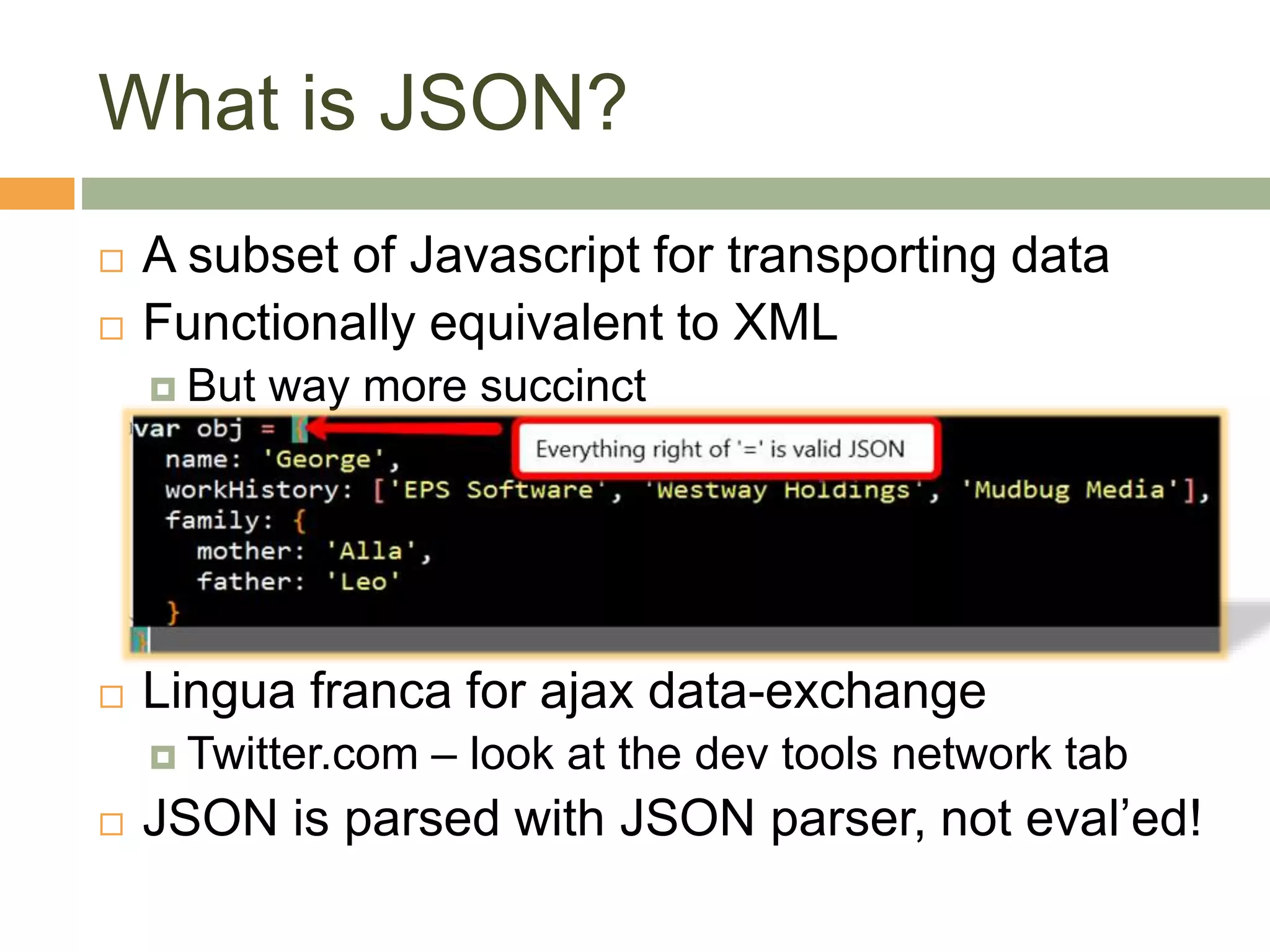

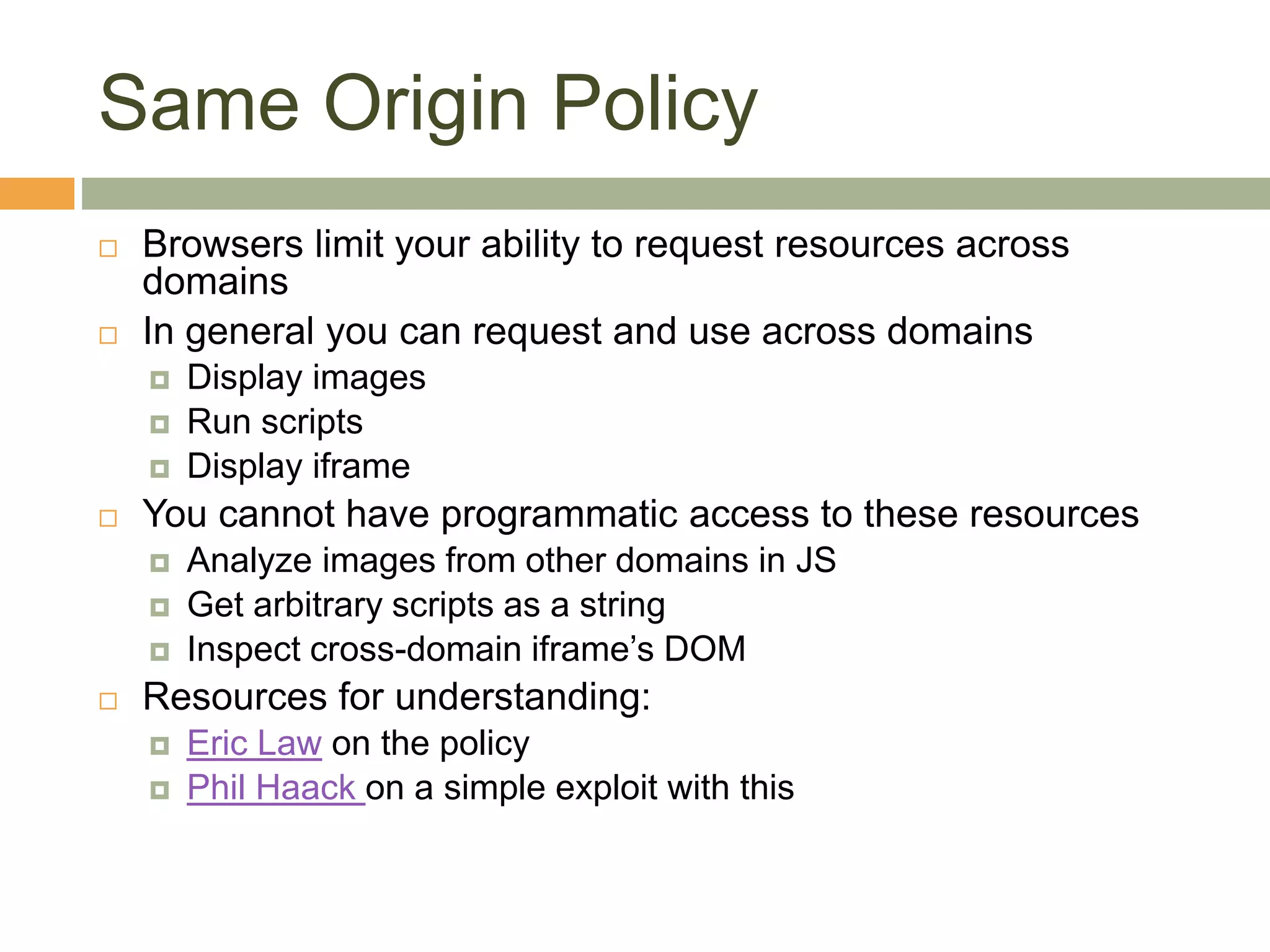
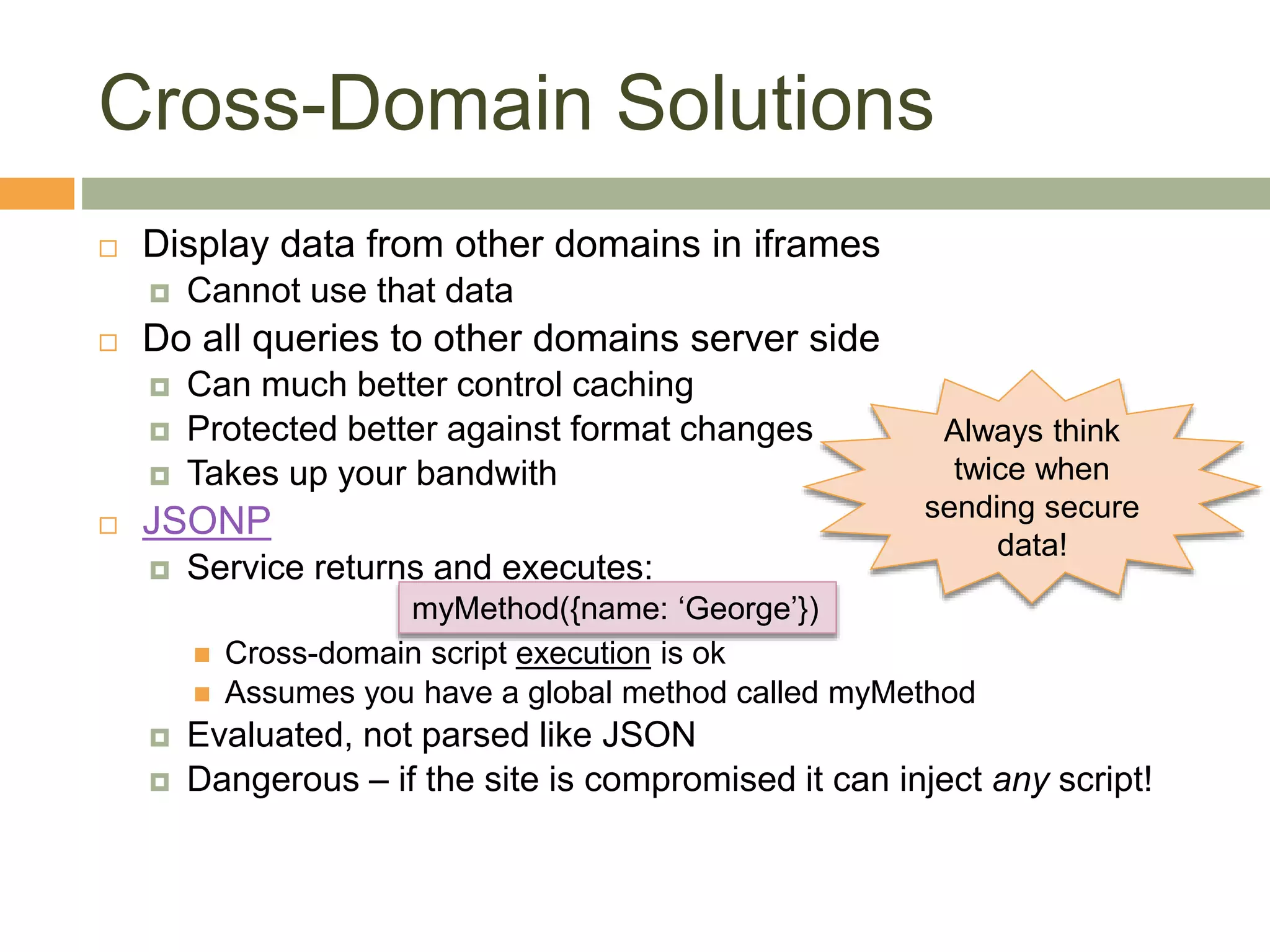
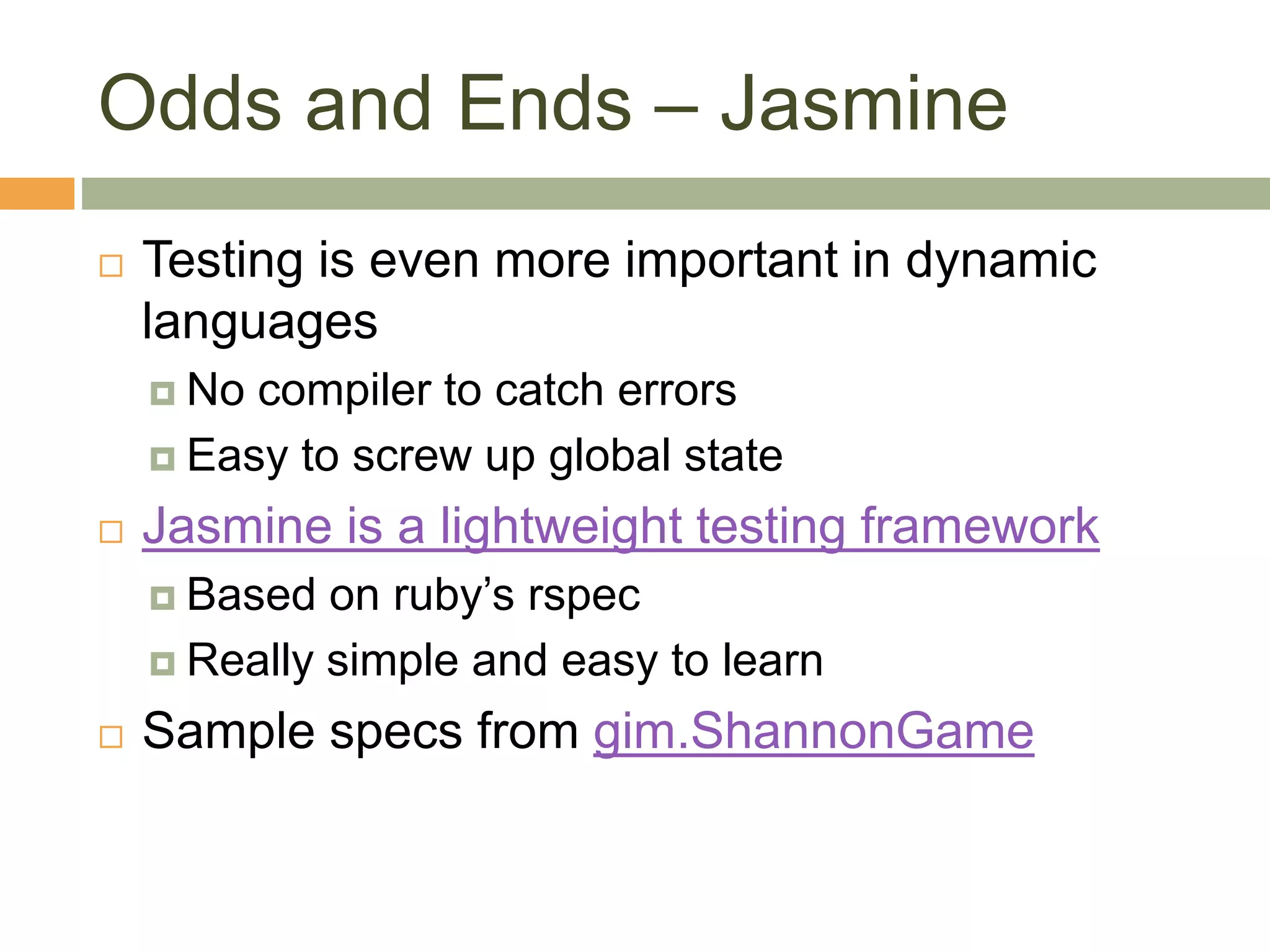
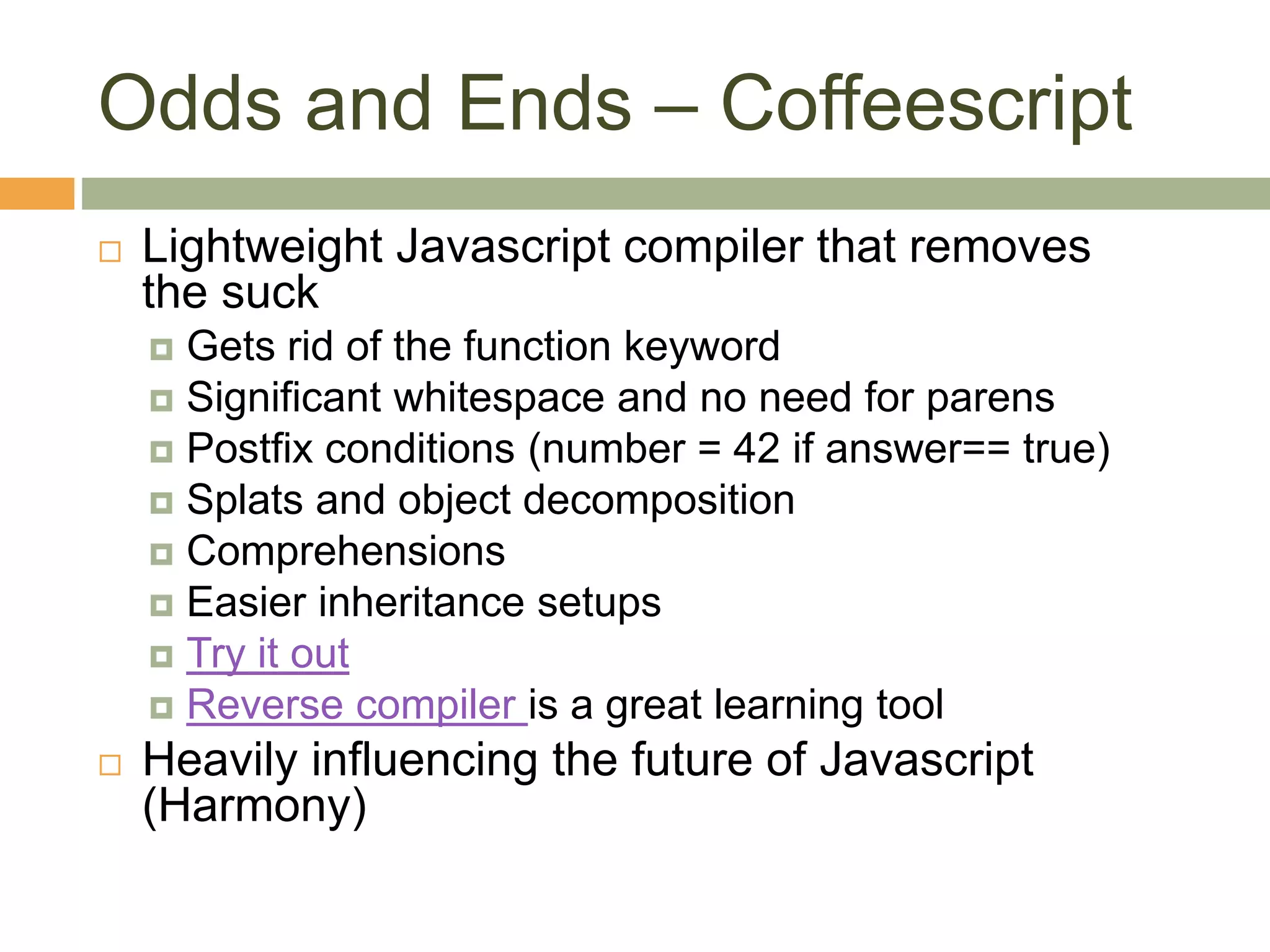
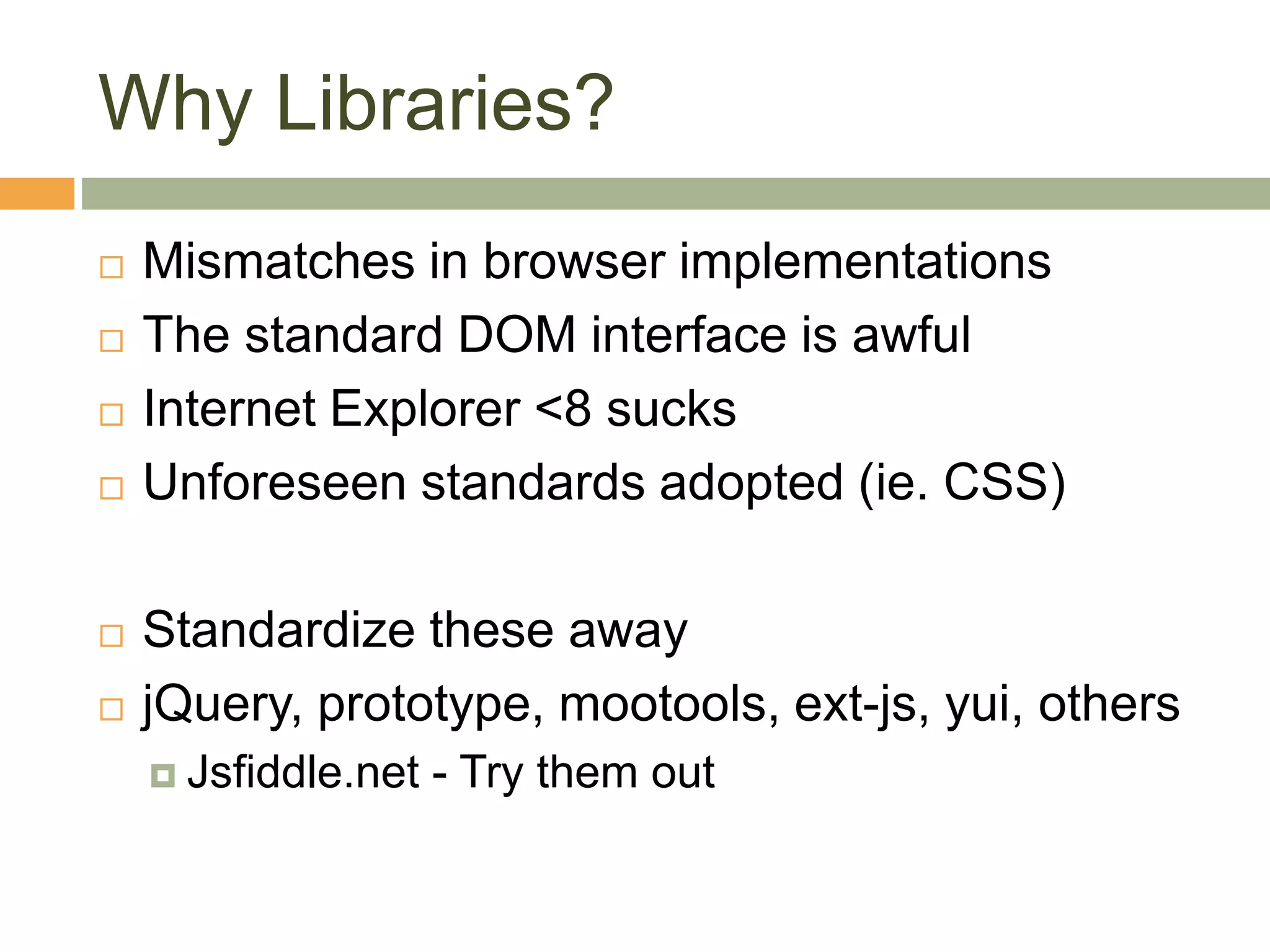
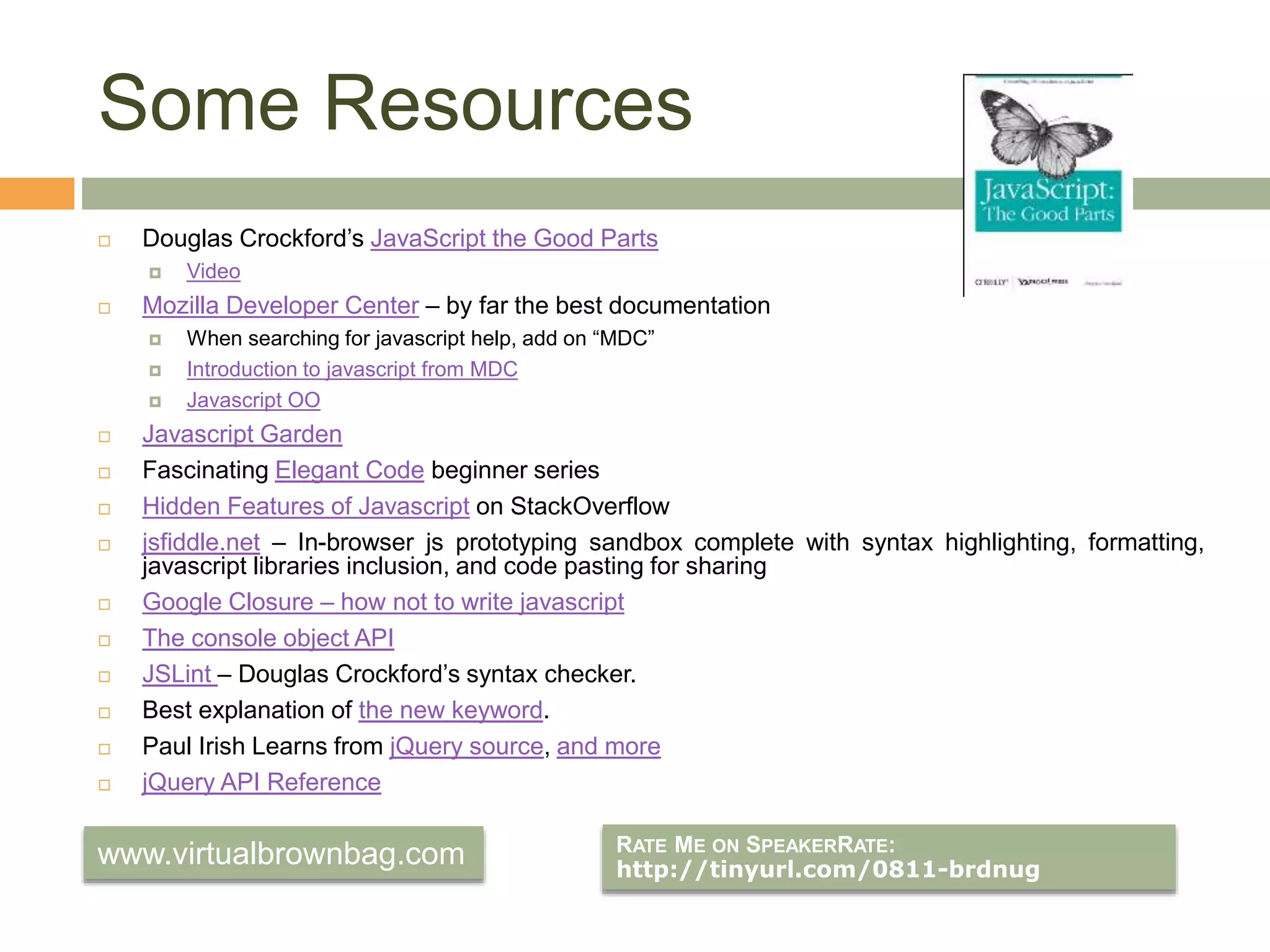

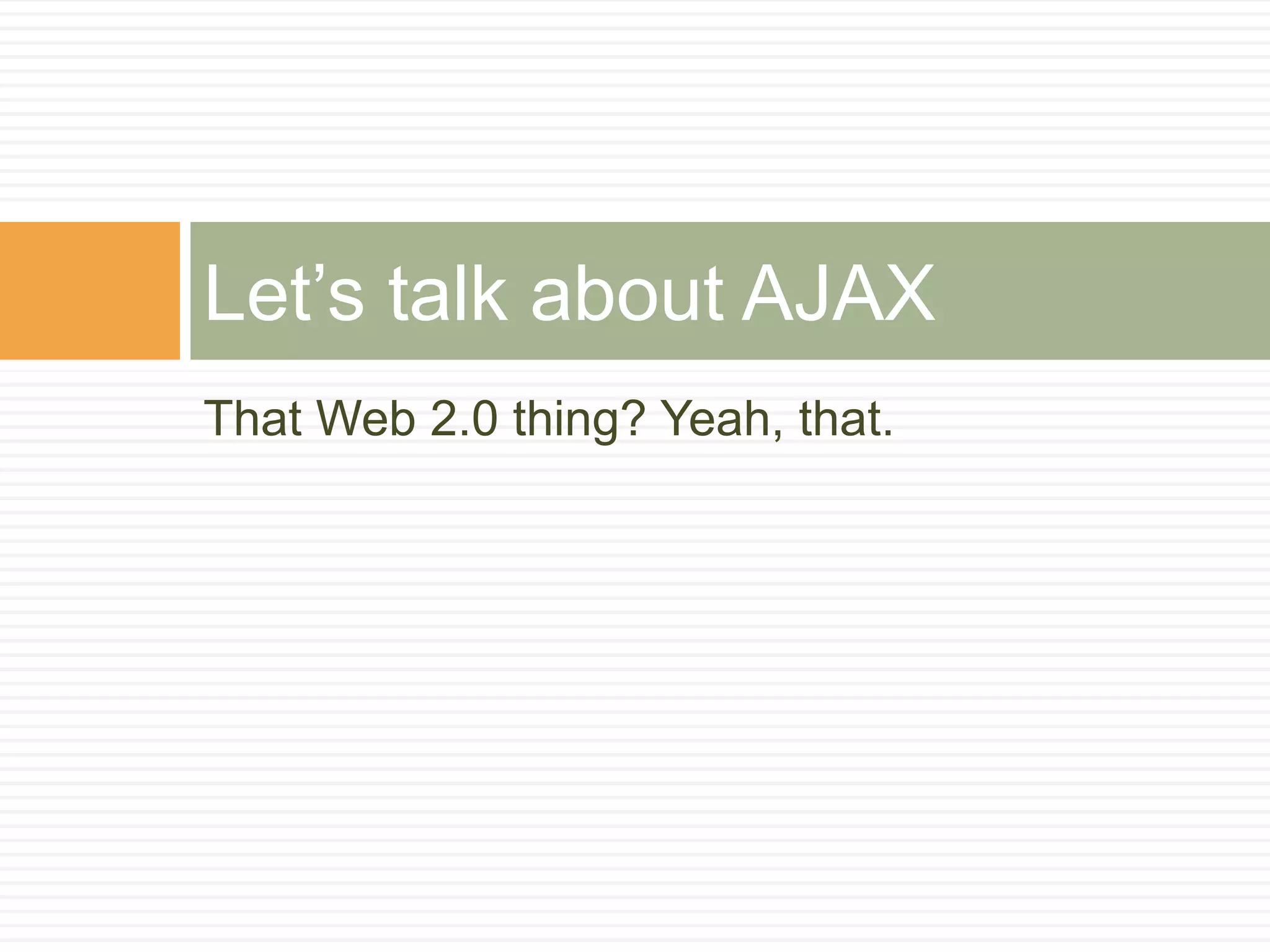
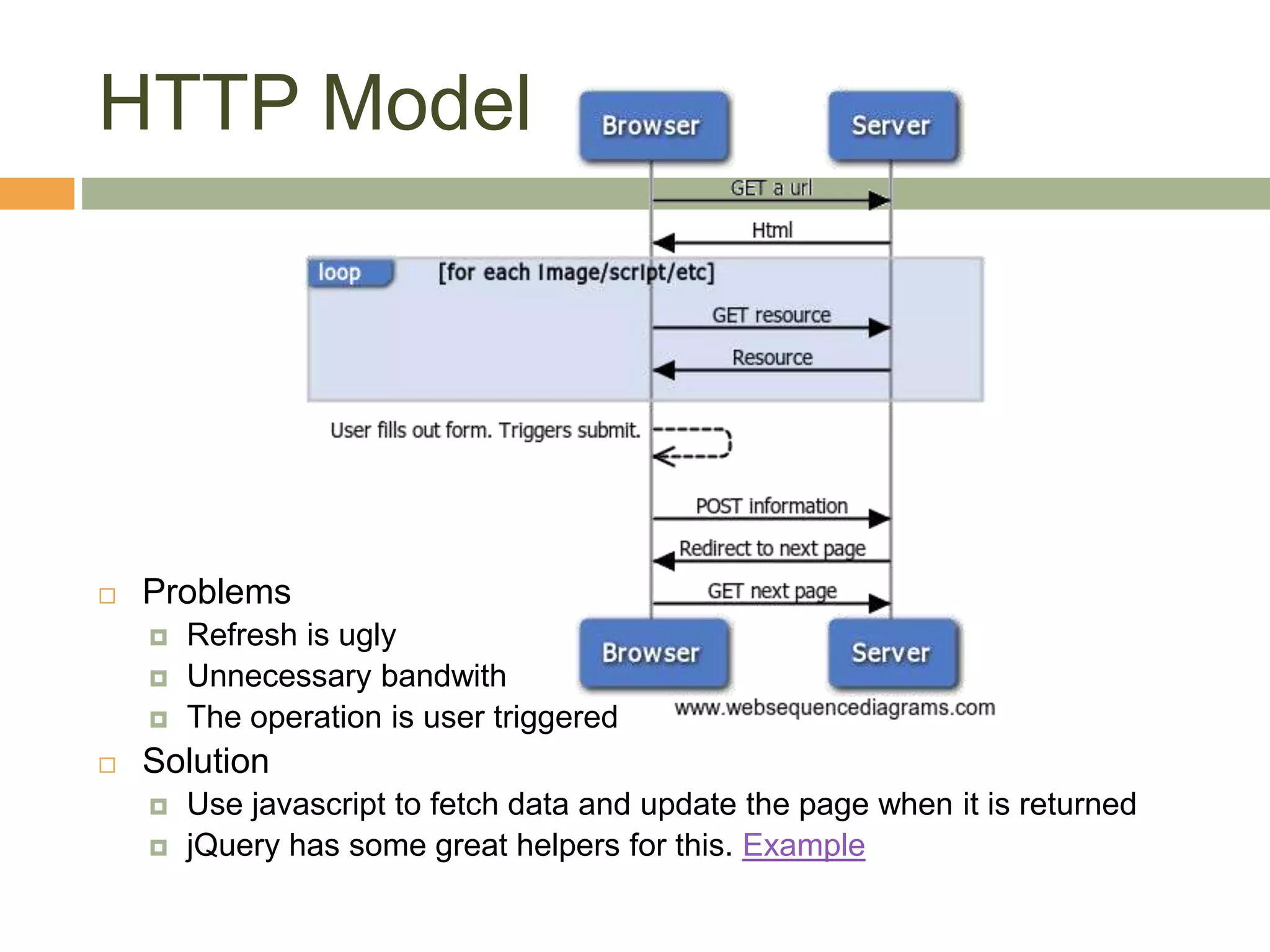
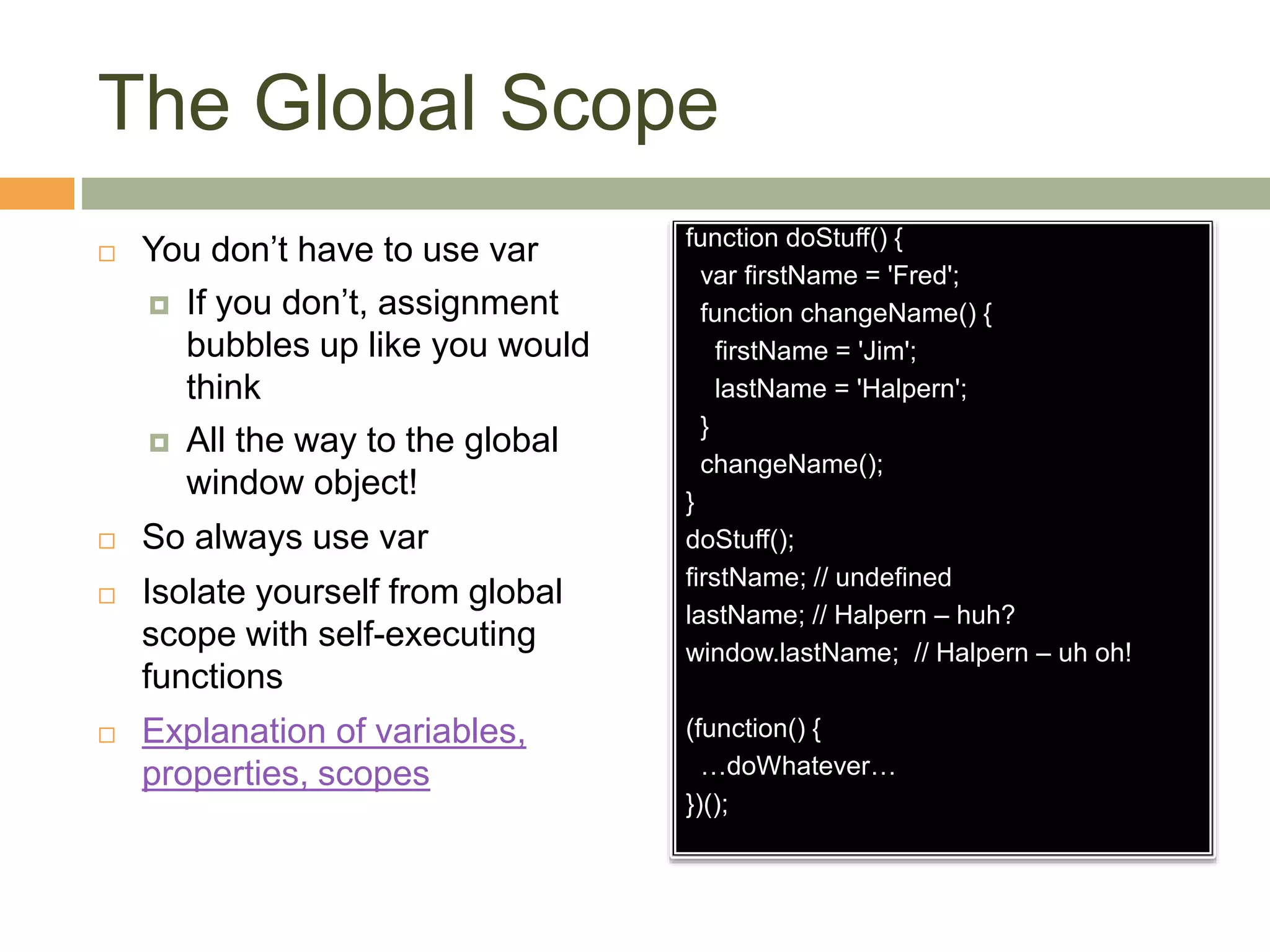
![More Javascript - Prototypes
Javascript is object-oriented and has no classes!
Prototype inheritance
Simpler – each object has a prototype object
Flexible – can mimic class inheritance and more
Remember: Every object is a hash
Plus a [[prototype]] attribute (revealed in some browsers by
the __proto__ property)
Q: Do you have a cupOfSugar?
Yes I do (object has cupOfSugar in the hash)
No I don’t but let me ask Peter (object does not but Peter is the
[[prototype]])
No I don’t (object does not and [[prototype]] is null)
Can be used to emulate Class Inheritance
Enables duck-typing, class-wide dynamicism, more!](https://image.slidesharecdn.com/allofjavascriptdep-110613233829-phpapp02/75/All-of-Javascript-33-2048.jpg)
![What’s new?
Javascript has a ‘new’ keywoad
But no traditional inheritance
You don’t really need to use ‘new’ for OO in
Javascript
What does ‘new do’?
All functions have a not null prototype
property
creates a function with the [[prototype]] set to
the constructor function’s prototype property
You can enforce ‘new’
Anti-intuitively works on functions but not objects
Newer versions of Javascript (> 1.8.5)
deprecate ‘new’ for
Object.create(withPrototype)
Constructor functions denoted via convention.
Capitalize constructor functions
camelCase non-constructor functions
function createPerson(name, age) {
return {
name: name,
age: age,
toString: function() { return this.name + " is " +
this.age + " years old“; }
}
}
var bob = createPerson("bob", 39);
var sal = createPerson("sal", 22);
-------------------------------------------------------------
var Cat = function(catName) {
this.catName = catName;
};
Cat.prototype.meow = function() {
console.log(this.catName+" says meow");
}
var mittens = new Cat("Mittens");
var whiskers = new Cat("Whiskers");](https://image.slidesharecdn.com/allofjavascriptdep-110613233829-phpapp02/75/All-of-Javascript-34-2048.jpg)
